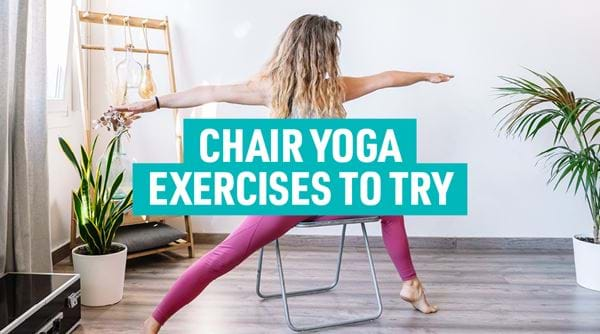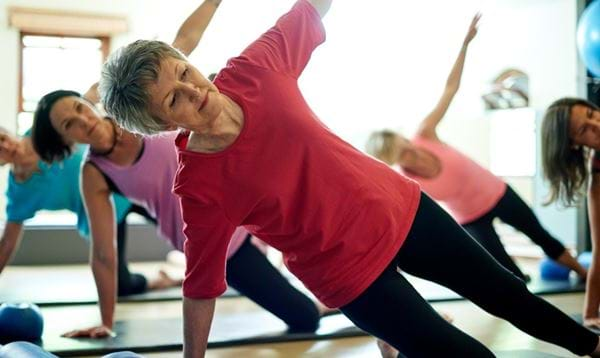Training safe in your 40s and beyond


Hi. I’m Paul Joseph. I’m a personal trainer at PureGym London Park Royal. I'll be turning 55 this June and have been commonly asked by people in and above their 40s how to get into training, whether it’s for leisure or competitively, so I thought it would be good to share my thoughts for those pondering the same question based on my own experience and fitness knowledge.
Change is a door that can only be opened from the inside
Things to consider before getting started
Aside from physical changes, there are major mental benefits to exercising. As we age and become more sedentary, our cogitative ability is negatively affected, so you can start to see things such as mental reasoning, memory and thinking start to decline. By keeping active, you can help ward off some of these symptoms and also alleviate symptoms of depression which is all the reason to get moving, no matter what age you are.
“A large ten-year study of middle-aged to older adults (45-70) has found that cognitive decline begins in the 45-55 decade, with reasoning ability the most affected by age.”
As we move in to our 30s and onwards our testosterone levels start to drop. This results in a potential loss of muscle mass which in turn can affect metabolism. By including weight training into your exercise routine, you can help reduce the loss of testosterone levels and avoid weight gain. I recommend performing squats and deadlifts , as these two large compound exercises are great for building strength and are also known to help us release more of our own natural testosterone and growth hormone.
One major thing to keep an eye on when training in your 40s and beyond is that you may find some exercise moves or activities can cause uncomfortable strain on your joints. Any exercise that causes unwanted pain should be avoided. If the pain is a real issue seek help from a doctor or specialist.
If you're new to training I recommend getting a full body movement assessment which looks at your mobility, flexibility, movement patterns before you get started with training. This way you can know where your strengths and weaknesses lie, as well as what exercises are best for you. You can ask a personal trainer to conduct a movement assessment, and they will be able to use this to advise a programme a training routine for you.
How to get started
- Make sure you give yourself ample time to warm up properly: The older we get, the more attention and time is required to get your body ready to move, so warming up becomes more important as we age. Try warming up for at least 5 minutes at bare minimum every time before you start your main workout. I recommend aiming for a 10-minute warm up starting with some light cardio work followed by some dynamic stretches.
- Don’t just stick to cardio: I recommend a mixture of weight and resistance training, cardiovascular training and active recovery sessions. Here’s why these different types are training are important to include as we age:
Resistance training is important as it can increase bone density and thereby prevent osteoporosis. Osteoporosis is a condition that weakens bones, making them fragile and more likely to break. It develops slowly over several years and is often only diagnosed when a minor fall or sudden impact causes a bone fracture.Whilst this is usually associated more with females it also applies to males too so it's important for both genders include resistance training into their routine.

Weight training will help reduce the risk of many individual chronic diseases and help us maintain muscle mass. As we age our metabolism slows, which is why we often see our weight go up. Weight loaded exercise will help fight against this. The more muscle we have, the more energy we burn, even at rest. If you’re not sure how to train with fixed resistance machines or weights, don’t be afraid to ask a personal trainer at your gym.

Cardiovascular training is great for the heart. It doesn’t need to be endless hours on a treadmill. Personally, I prefer variations of HIIT (High Intensity Interval) training where you work hard and intensely for a period of time followed by a short rest. One variation of HIIT is known as “Tabata” where you work hard for 20 seconds then rest for 10 seconds and repeat this circuit 8 times. Such high intensity activities can help to raise your metabolism for 6 to 8 hours after your session. For HIIT workout ideas, check out our free videos workouts here.
Active recovery sessions such as a light walk or cycle can be a great way to relieve stress and help the body recover from previous exercise sessions.

- Work on your mobility: Over time, your body will naturally become less mobile and stiffen up as our tendons start to dry. Make sure to include some time to stretch different parts of your body to keep your flexibility and range of motion, which is particularly important when performing weight-bearing exercises.
- As we get older, it takes more time for the body to recover. Make sure to check in with how you are feeling, give yourself enough time to rest and avoid overtraining. If your muscles are feeling tight, try self-massaging using a foamroll or lacrosse ball to help release trigger points.
I hope you found this useful If you have any questions, feel free to get in touch. My email is: fitnup.uk@gmail.com


